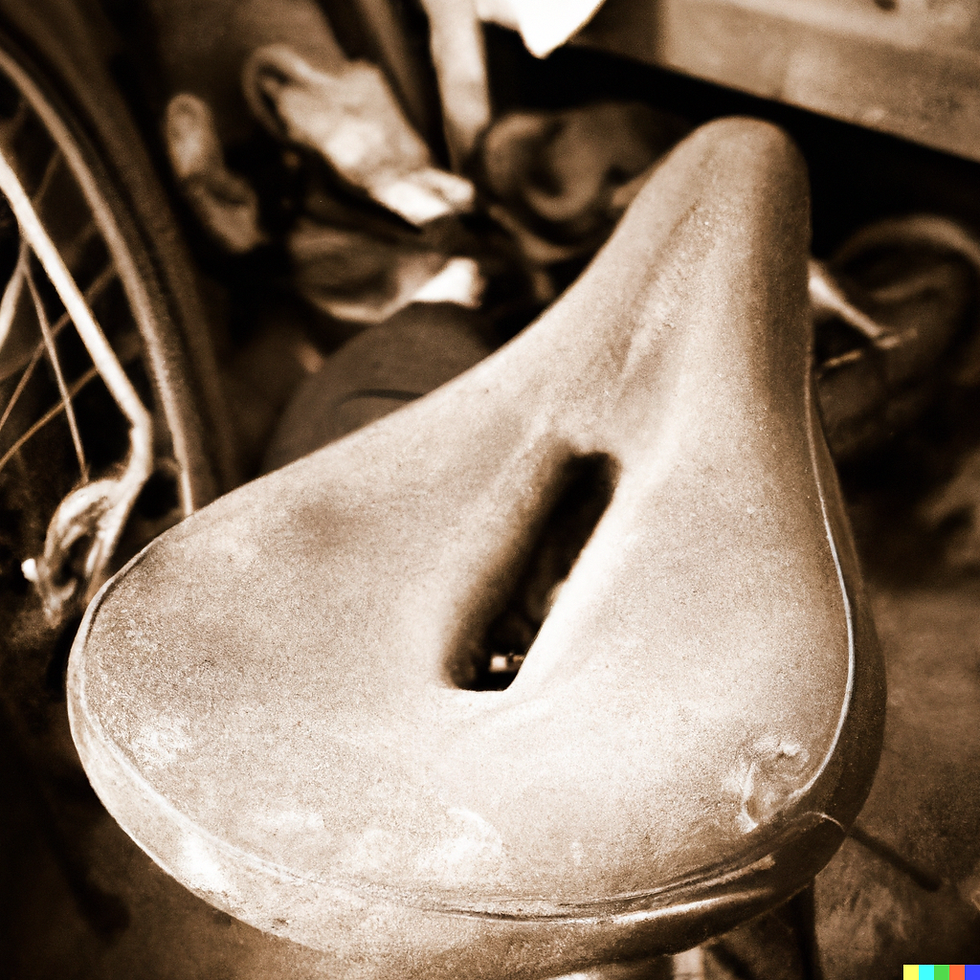Facing the Dusty Saddle
- mattygmo
- Nov 3, 2023
- 3 min read
Overcoming the Psychological Barriers to Reconnect with Cycling

We've all been there, a bike gathering dust in the corner, tires deflated, and gears rusty. It's not just a piece of equipment; it's a symbol of unfulfilled promises and lost momentum. Today's blog dives deep into the psychology of overcoming that initial hurdle, gaining momentum, conquering lethargy, and instilling a sense of internal belief and purpose.
The Dusty Saddle as a Mental Block
The dusty saddle isn't just a physical object; it's a mental block. It represents all the excuses we've made and the opportunities we've missed. The first step in overcoming this hurdle is acknowledging it as a psychological barrier.
Think of it as a mirror reflecting your hesitations and fears. Facing it head-on is the first step in breaking the cycle of inactivity.
The Psychology of Starting Again
Starting again after a hiatus is fraught with mental challenges. The fear of failure, the weight of expectations, and the dread of discomfort—all these factors contribute to inertia.
The key is to reframe the narrative. Instead of viewing it as a monumental task, see it as an opportunity for a fresh start. The past doesn't define you; your actions today do.
Gaining Momentum: The Snowball Effect
Momentum is a powerful psychological force. The hardest part is getting the ball rolling, but once you do, it becomes easier to maintain. Start with small, achievable goals like a 5-minute ride around the block.
The snowball effect comes into play when these small wins accumulate, each one adding to your growing sense of accomplishment and self-belief.
Overcoming Lethargy: The Mind-Body Connection
Lethargy is often a symptom of a deeper issue—a lack of motivation. The mind and body are intrinsically linked, and a lethargic body often reflects a disengaged mind.
Physical activity, even in small doses, releases endorphins that not only improve your mood but also boost your energy levels. The act of getting on the bike and pedaling, even for a few minutes, can break the cycle of lethargy.
Instilling Internal Belief: The Power of Self-Talk
Your internal dialogue plays a crucial role in shaping your actions. Negative self-talk like "I can't do this" or "I'm too out of shape" only serves to reinforce your doubts.
Replace these thoughts with empowering affirmations such as "I am capable" or "Every pedal brings me closer to my goal." This positive self-talk instills a sense of internal belief that propels you forward.
Finding Your Why: The Role of Purpose
The purpose is the ultimate motivator. Whether it's improving your health, conquering new challenges, or even setting an example for your loved ones, having a clear "why" can be the driving force that gets you back on the saddle.
Your purpose doesn't have to be grandiose; it just has to be meaningful to you. When the going gets tough, reminding yourself of your "why" can provide the extra push you need.
Your Journey Awaits
Facing the dusty saddle is more than just a physical endeavor; it's a journey of mental and emotional growth. By understanding the psychological barriers and actively working to overcome them, you pave the way for a fulfilling and sustainable return to cycling.
Acknowledge the Mental Block: Recognising the dusty saddle as a psychological barrier is the first step in overcoming it.
Reframe the Narrative: Change your perspective to see the opportunity rather than the obstacle.
Build Momentum: Start with small, achievable goals and let the snowball effect take over.
Break the Cycle of Lethargy: Use physical activity to boost your mental state and energy levels.
Empower Through Self-Talk: Replace negative thoughts with empowering affirmations to instill internal belief.
Find Your Why: Identify a meaningful purpose to serve as your ultimate motivator.




Comments